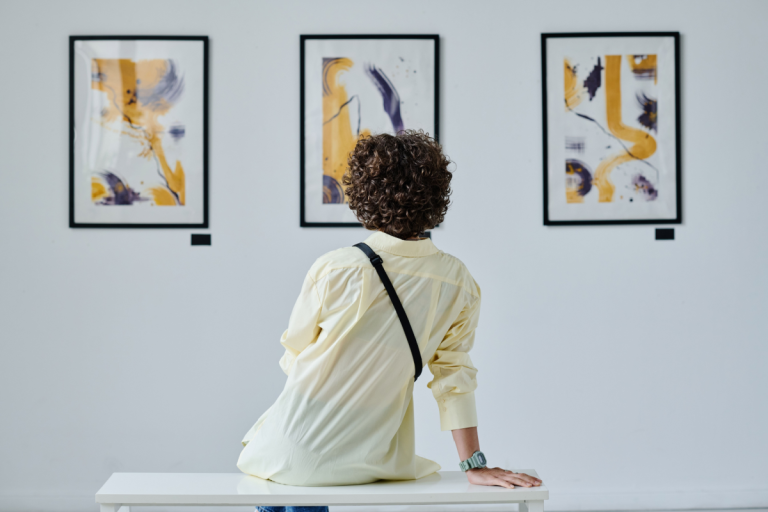King’s College London Research Confirms Physical Health Benefits of Art
A new study from King’s College London has provided scientific proof that viewing original artworks in person can improve not only mental health but also physical wellbeing. Researchers found that spending just 20 minutes in an art gallery led to measurable decreases in stress hormones and inflammation—offering hard evidence that art truly heals.
The study involved 50 adults aged 18 to 40, who viewed works by celebrated 19th-century artists including Toulouse-Lautrec, Manet, Van Gogh, and Gauguin. Half of the participants experienced the paintings in London’s Courtauld Gallery, while the rest viewed reproductions in a neutral lab setting. Each participant spent three minutes observing five paintings, including Van Gogh’s Self-Portrait with Bandaged Ear and Manet’s A Bar at the Folies-Bergère.
Art Lowers Cortisol and Inflammation
The physiological changes observed among gallery visitors were dramatic. Researchers recorded a 22% drop in cortisol—the primary stress hormone—and up to a 30% reduction in inflammatory markers linked to illnesses such as heart disease, diabetes, and depression. No similar benefits were detected among those who viewed reproductions.
“The magnitude of the difference between being in here and looking at the real art, versus copies in the lab, was quite enormous,” said Dr. Tony Woods, the study’s lead researcher. “Art is very well worth investing in because of the return on health—it will keep people out of hospitals.”
The findings align with the UK’s growing embrace of social prescribing, a health initiative that includes art, music, and nature-based activities as part of preventive care. More than 1.5 million Britons have used social prescribing in the past year, and NHS England hopes to expand access nationwide.
Artists and Experts Celebrate the Results
Actor and art enthusiast Russell Tovey, co-host of the podcast Talk Art, reflected on the emotional connection people have with masterpieces like Van Gogh’s Self-Portrait with Bandaged Ear. “You look at the brushstrokes and colors, and you think about his life at the time,” Tovey said. “Art is intrinsic to humanity—it shows us who we are.”
Tovey’s co-host and gallery owner Robert Diament added that visiting galleries should be part of regular self-care. “It’s good for your health, your mental wellbeing, and your sense of calm. Going to a museum can be as important as eating well or exercising.”
Reviving Public Appreciation for Galleries
For museums and galleries struggling with rising costs and declining visitors, these findings could offer a timely boost. Jenny Waldman, director of the national charity Art Fund, said the study validates what curators have believed for centuries: “These museums were founded because people believed art was good for society. This research finally proves they were right.”
Visitors also agreed. Ten-year-old Charlie from London said viewing paintings in person made him feel “calm and drawn in,” while his father noted that no screen could replicate the experience of standing before a real artwork. For Taeseok, an art student visiting from Amsterdam, it was a moment of focus and mindfulness: “Things around you stop mattering—it’s just you and the artwork.”
As the UK government looks for ways to promote preventive healthcare, the research from King’s College London offers compelling evidence that art can play a vital role. Far from being a luxury, a trip to the gallery may soon be seen as a prescription for both body and mind.


